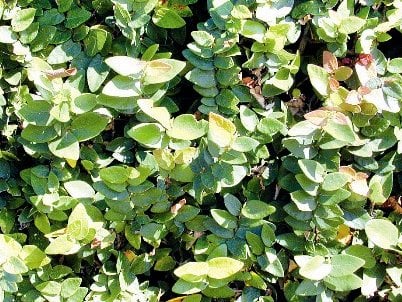Phuket Gardening: Climbing the walls

PHUKET: Thailand is home to countless white-walled gardens.
For the most part they are beautiful – until a year or two of tropical rain leaves them looking discolored and plain shabby. Of course, they can be repainted, but this is not as easy as it sounds when you have to manipulate your brush or roller behind rows of shrubs or climbing vines.
A better solution may well be to cover your walls with a creeping plant that looks good and stays permanently green. Yes, you read that correctly – that’s creeping, not climbing.
Climbers such as the Allamanda, the Rangoon Creeper, or Chalice Vine may look magnificent when in full bloom, but they are top-heavy plants, and since they do not produce tendrils, they will need to be attached to sticks, fencing or a trellis to keep them from keeling over.
Moreover, they tend to reach up toward the overhead sun, and end up covering the top half of a wall rather than enveloping the whole structure.
Even climbers with tendrils have a hard time attaching themselves to flat, smooth walls. On brick walls or tree trunks, there are always crevices which they can anchor themselves to – but not on these walls.
Ivy could probably manage it, but there is no ivy in Phuket – it’s just too hot for a plant with tiny rootlets that can, in cooler conditions, adhere to the flattest of surfaces.
The nearest equivalent to ivy is in fact a variety of fig commonly called creeping fig (ficus pumila). This will cling, in a leech-like manner, to even the most pristine of surfaces.
On Chao Fa East Road, there is a school with high perimeter walls. And on a wall at one side of the school, leading to Villa 5, you will find a fine example of creeping fig.
It has covered all – save one small section – of a 150-meter-long wall with its shiny, green leaves. The discolored bit of wall that is not covered in green foliage is a stark reminder that nature often provides the best solutions.
The creeping fig, known in Thai as teen took kai, has neat, heart-shaped leaves and once established will grow remorselessly.
Propagation is best done by cuttings which should be planted in an acid soil with plenty of nutrients.
Another variety called “snowflake” is also available. But be careful, the old growth will have thicker stems and may produce pale-green, inedible fruits.
Since this mature growth also has larger leaves and branches which tend to hang down, it will need to be pruned away from time to time.
In this way, you stimulate the creation of young and desirable foliage. A bit of effort required here, but still a lot less hassle than turning to your paint pot.
The trumpet vine (thunbergia grandiflora) is not as efficient as the creeping fig at attaching itself to walls. But nonetheless, it will cover large areas, hanging down in long floral clusters that easily reach the ground.
The Trumpet Vine has the advantage of being extremely fast off the mark, and has masses of trumpet-shaped, mauve or white flowers. The leaves are heart-shaped and slightly rough to the touch. It likes moist soil and though it will tolerate full sun, it prefers some shade.
Two other rampant blanketers of man-made structures are the garlic vine and the Honolulu Creeper or coral vine. There will be a report on both of these climbers in due course.
Phuket Gardening is Phuket Gazette columnist Patrick Campbell’s feature of all things flora and fauna.
If you have a garden that you would like to be featured in the Gazette, please email: pcampbell45@gmail.com
Keep checking our online Phuket Lifestyle pages for regular gardening features and tips.
— Patrick Campbell
Latest Thailand News
Follow The Thaiger on Google News:


























